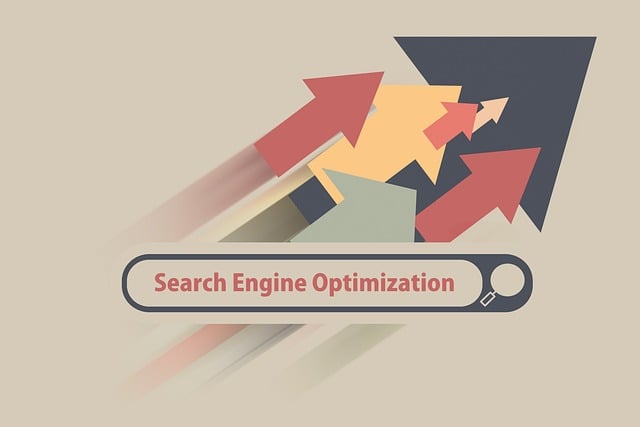Keyword Research and Optimization (KRO) are essential for website success, aiming to align content with user search queries and improve search engine visibility. This process involves understanding target audiences' language and preferences by identifying relevant keywords using tools like Google Keyword Planner, SEMrush, or Ahrefs. These platforms offer insights into search volume, competition, and keyword suggestions, including long-tail keywords, for better SEO. Regular monitoring through Google Analytics and Search Console is crucial to refine strategies based on performance data, adapting to user behavior changes and search engine algorithms. Continuous optimization ensures long-term rankings by updating content, researching new keywords, and integrating them naturally without spamming.
In the digital landscape, effective Keyword Research and Optimization is paramount for website success. This comprehensive guide explores the art of optimizing your online presence through strategic keyword selection and implementation. From understanding core concepts like identifying relevant terms to utilizing powerful tools for analysis, we’ll navigate through each step essential for boosting visibility. Discover how to leverage long-tail keywords, optimize on-page elements, and enhance user experience to drive organic traffic and outperform competitors.
Understanding Keyword Research: Identifying Relevant Terms

Keyword research is a fundamental step in any successful website optimization strategy. It involves understanding your target audience’s language, preferences, and search behavior. By identifying relevant keywords, you can tailor your content to meet user expectations and improve search engine visibility. This process starts with brainstorming terms closely related to your business or topic, then expanding this initial list through various research tools and techniques.
Identifying relevant terms requires a deep dive into industry trends, competitor analysis, and user search queries. Tools like Google Keyword Planner, SEMrush, or Ahrefs can provide valuable insights into search volume, competition, and keyword suggestions. These platforms help you uncover long-tail keywords—specific phrases with lower competition but significant search interest—that can significantly enhance your website’s SEO and attract a more targeted audience.
Tools for Efficient Keyword Discovery and Analysis

Uncovering relevant keywords is a fundamental step in any keyword research and optimization strategy. There are numerous tools available to streamline this process, providing insights into search trends, competition, and user intent. These include advanced SEO platforms that offer comprehensive keyword discovery, such as Ahrefs, SEMrush, and Moz. These tools enable users to explore vast databases of search terms, identify long-tail keywords, and analyze the difficulty of ranking for specific phrases.
By leveraging these resources, businesses can make data-driven decisions about which keywords to target. They provide detailed reports on keyword volumes, suggesting popular search terms relevant to a website’s niche. Moreover, these tools often include features like related keyword suggestions, competitor analysis, and backlink insights, fostering a holistic understanding of the digital landscape and helping optimize content for better search engine visibility.
Evaluating Search Volume and Competitor Performance

Evaluating search volume is a crucial step in keyword research and optimization. It involves understanding how many users are actively searching for specific keywords or phrases related to your business or niche. Tools like Google Keyword Planner, SEMrush, or Ahrefs can help you access this data by providing insights into monthly search volumes. This information is vital as it helps prioritize keywords based on their potential reach and conversion value.
Competitor performance analysis complements search volume evaluation. By examining the websites that currently rank for your targeted keywords, you gain valuable insights into what strategies are working in your industry. Tools such as SimilarWeb or SEMrush’s competitor analysis features can help identify top-performing sites, the keywords they target, and their overall SEO tactics. This knowledge allows you to benchmark your own strategy, find gaps in the market, and refine your approach to stay competitive in the digital landscape.
Long-Tail Keywords: Unlocking Niche Opportunities

Long-tail keywords are a powerful tool for website optimization, offering businesses the chance to tap into niche markets and specific user intents. These phrases are more descriptive and often consist of three or more words, providing greater detail than short-tail keywords. By targeting long-tail keywords, websites can attract highly relevant traffic with higher conversion rates. For instance, instead of optimizing for a broad term like “shoes,” which is highly competitive, businesses can focus on specific phrases like “comfortable running shoes for wide feet.”
This strategy allows brands to compete in less crowded spaces and cater to unique customer needs. Keyword research plays a pivotal role here, as tools enable marketers to uncover these long-tail opportunities. Through thorough analysis, they can identify search patterns, understand user behavior, and ultimately refine content strategies to match the intent behind these niche queries, enhancing both online visibility and user experience.
On-Page Optimization: Incorporating Keywords Strategically

On-Page optimization is a critical aspect of search engine optimization (SEO) that involves incorporating relevant keywords into your website’s content in a strategic manner. It ensures that your site’s content is both informative and aligned with what users are searching for, thereby enhancing its visibility on search engines. The process starts with thorough keyword research to identify the terms people use when looking for products or services related to your niche. Once these keywords are determined, they should be naturally woven into various elements of your webpage, including titles, headings, meta descriptions, and content body.
Using these keywords in relevant places improves search engine understanding of your page’s topic, leading to better ranking on specific queries. It’s essential not to overdo it; keyword stuffing can harm your site’s credibility. Instead, focus on creating high-quality, engaging content that incorporates keywords fluently and accurately reflects the page’s subject matter. This approach ensures your website remains optimized for search engines while providing a positive user experience.
Meta Tags, Titles, and Descriptions: Crafting Compelling Content

Meta tags, titles, and descriptions are crucial elements in keyword research and optimization for any website. The meta tag is a snippet of code that provides search engines with essential information about your web page. It includes keywords and a brief description, which help search algorithms understand the content of your page. A well-crafted meta tag can significantly impact your site’s visibility in search results, driving more organic traffic.
When crafting compelling content for these elements, it’s important to balance keyword usage with readability. While including relevant keywords is essential for SEO, overstuffing can lead to penalties. Focus on creating titles and descriptions that are both informative and engaging. A captivating title and concise, accurate description not only entice users but also signal to search engines the value your page offers, boosting its ranking potential.
User Experience and SEO: A Synergistic Relationship

In the realm of digital marketing, the interplay between User Experience (UX) and Search Engine Optimization (SEO) is a powerful synergy that drives online success. A well-optimized website not only ranks higher in search engine results but also provides visitors with an exceptional, user-friendly experience. Keyword Research and Optimization play a pivotal role in this relationship. By understanding user intent and incorporating relevant keywords naturally into content, websites can enhance both their SEO rankings and UX satisfaction.
When users land on a site, they expect a seamless journey. Relevant keywords strategically placed throughout the copy ensure that visitors find the information they seek promptly. This not only boosts engagement but also encourages longer browsing sessions, reducing bounce rates. As search engines prioritize user-friendly sites, optimizing for both SEO and UX is essential to stay competitive in today’s digital landscape.
Monitoring and Adjusting Keyword Strategy for Optimal Results

Regular monitoring and adjustments are vital components of a successful keyword research and optimization strategy. Once your initial keyword selection is in place, it’s crucial to track your website’s performance using tools like Google Analytics and Search Console. Analyze traffic sources, click-through rates, and conversion metrics associated with specific keywords. This data provides insights into which keywords resonate best with your audience and drive the most valuable interactions.
Based on these findings, periodically refine your keyword strategy. Reassess long-tail keywords that show promise but are not currently targeted. Update content to include newly identified relevant terms and ensure existing content remains optimized for its intended keywords. Continuously adapting to search engine algorithm changes and shifts in user behavior is essential to maintaining and improving website rankings over time.
Best Practices for Continuous Keyword Optimization

Continuous keyword optimization is an ongoing process that requires a strategic approach for long-term success in search engine rankings. Regularly updating content with relevant keywords and phrases is key, but it’s also essential to monitor trends and adapt to changes in user search behavior. Utilize tools like Google Analytics and Search Console to track keyword performance, identify new opportunities, and understand user intent.
Best practices include conducting thorough keyword research to uncover long-tail keywords and content gaps, optimizing on-page elements such as titles, headings, and meta descriptions, and ensuring a natural integration of keywords throughout the website’s copy without appearing spammy. Additionally, building high-quality backlinks from authoritative sources can enhance your site’s authority and improve its visibility in search results.
